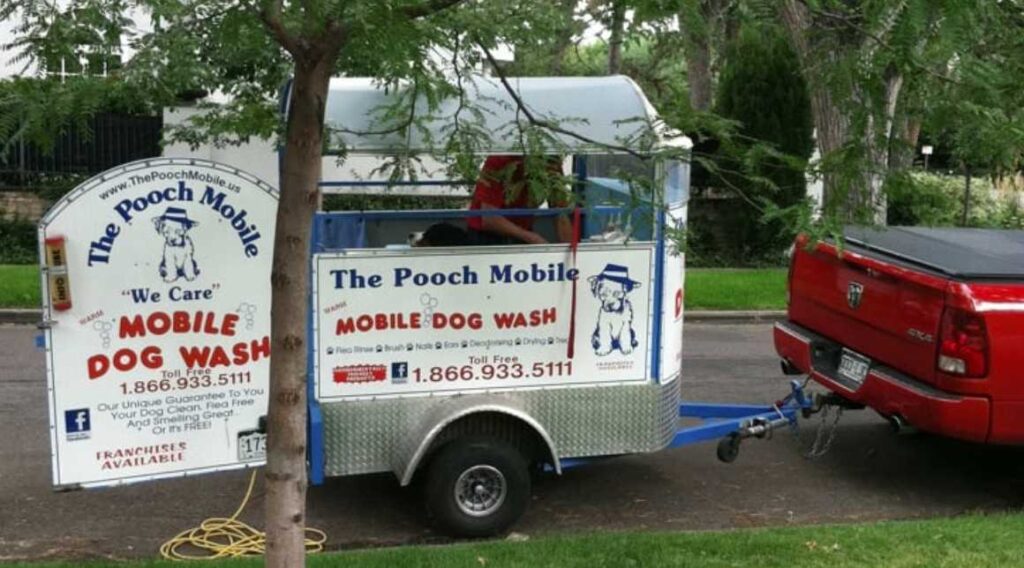When you have a successful business, many small businesses naturally feel the urge to grow by adding more physical locations. Expanding the number of locations presents owners with two primary options: adding more company locations or licensing the concept to another business owner in the form of a franchise. As I shared in 13 Business Expansion Risks When Opening a Second Location, finding an employee manager with the passion and drive to make additional corporate locations successful is often hard. Moreover, it takes lots of money to open a new location, which many small businesses do not have. Therefore, the idea of franchising the concept and finding an entrepreneur to invest in and operate the new business location seems like the most logical choice. So, it’s not surprising that a client with a successful business model signs up for one of my mentoring sessions to create a franchise model several times a year.
Franchising offers businesses a potential avenue for expansion and allows them to scale their proven concepts and leverage the entrepreneurial spirit of franchisees. However, the journey from a successful business model to a thriving franchise network involves a multitude of considerations, strategies, and potential challenges. Let’s delve into some of the intricacies of franchising and explore essential elements such as concept viability, brand development, and support infrastructure. We’ll examine the costs associated with franchising, outline key factors for success, and draw insights from both successful franchises and cautionary tales of failures. From franchise agreements to expansion strategies, this exploration aims to provide an overview of the franchising landscape and offer insights to businesses considering franchising as a growth path, so they can contemplate the option with their eyes wide open.
What It Takes to Start a Franchise Concept
Franchising a successful business model involves ten important elements:
Proven Concept: The business model should have a track record of success. It’s crucial to demonstrate that the concept works and is replicable in different locations. McDonald’s is a classic example of a franchise with a proven concept. Before offering franchises, McDonald’s established a successful model with consistent menu items, efficient processes, and a focus on fast service across multiple geographies.
Related Post: The Golden Arches of Wisdom
Strong Brand: A recognizable and trusted brand helps attract franchisees and customers alike. Investing in branding and marketing is essential to building brand awareness. Starbucks has built a strong brand synonymous with premium coffee and a cozy atmosphere. Their green logo and iconic cups are instantly recognizable worldwide, attracting both customers and potential franchisees.
Related Post: Why Branding Is So Important for You and Your Business
Documented Processes: Detailed operating manuals and procedures ensure consistency across all franchise locations. These documents should cover everything from day-to-day operations to customer service standards. Subway provides its franchisees with detailed operating manuals covering everything from food preparation to customer service protocols. These manuals ensure consistency across thousands of Subway locations worldwide.
Training and Support: Providing comprehensive training programs and ongoing support for franchisees is vital. Franchisees need to understand how to run the business effectively and have access to assistance when needed. Anytime Fitness offers extensive training and ongoing support to franchisees. They provide initial training on business operations, marketing strategies, and fitness equipment usage, along with continuous support through field visits and online resources.
Legal Compliance: Franchising involves adhering to various legal requirements and regulations. It’s essential to consult legal experts familiar with franchising laws to ensure compliance before franchising. Dunkin’ Donuts ensures compliance with franchise disclosure laws and regulations. They work closely with legal experts to develop franchise agreements adhering to state and federal franchising laws.
Financial Stability: Prospective franchisees will want to see evidence of the business’s financial stability and potential for profitability. Providing transparent financial information and projections can help attract quality franchisees. KFC provides prospective franchisees with detailed financial information, including average store revenues and operating costs. This transparency helps potential franchisees assess the profitability and stability of investing in a KFC franchise.
Franchisee Selection: Choosing the right franchisee is critical to the success of a franchise network. Look for individuals or groups with the necessary skills, experience, and passion for the business. The UPS Store carefully selects franchisees based on factors such as business acumen, leadership skills, and commitment to customer service. They look for individuals who align with UPS’s values and can effectively represent the brand.
Franchise Agreements: Develop clear, fair franchise agreements that outline the rights and responsibilities of both franchisor and franchisee. These agreements should address fees, territory rights, and other important terms. Burger King’s franchise agreement delineates the terms of the partnership between the franchisor and franchisee. It covers aspects such as franchise fees, territory rights, and operational standards, ensuring consistency across the Burger King network.
Continuous Improvement: A successful franchise system requires ongoing evaluation and improvement. Be open to franchisee feedback and continuously look for ways to enhance the business model. Chick-fil-A’s core values emphasize continuous improvement by regularly evaluating menu offerings, service standards, and employee training programs. They solicit feedback from customers and franchise operators to identify areas for enhancement and innovation.
Expansion Strategy: Develop a strategic plan for expanding the franchise network. This may involve targeting specific geographic regions or market segments and implementing marketing campaigns to attract potential franchisees. RE/MAX implements an expansion strategy by targeting underserved markets and recruiting experienced real estate agents as franchisees. They focus on areas with growing housing markets and provide extensive support to help franchisees establish successful businesses in their respective regions.
What It Costs to Start a Franchise Concept
The cost of turning a concept into a franchise can vary widely depending on various factors, including the industry, the complexity of the business model, and the scale of expansion. However, here are some typical costs associated with franchising a business concept:
Legal Fees: Engaging legal experts to draft franchise agreements and disclosure documents and ensure compliance with franchising laws can incur significant costs. These fees can range from several thousand to tens of thousands of dollars, depending on the complexity of the legal work involved.
Consulting Services: Many businesses enlist the help of franchise consultants or development firms to guide them through the franchising process. These consultants provide expertise in areas such as franchise strategy, operations, and marketing. Costs for consulting services can vary widely depending on the scope of work and the consultant’s reputation.
Franchise Development Costs: This includes expenses related to developing franchise training programs, operations manuals, and marketing materials tailored for franchisees. Costs for developing these materials can vary based on the size and complexity of the business but may range from several thousand to tens of thousands of dollars.
Marketing and Branding: Building brand awareness and attracting potential franchisees requires investment in marketing and advertising efforts. Costs may include website development, advertising campaigns, trade show participation, and promotional materials. The amount spent on marketing can vary depending on the aggressiveness of the franchisor’s expansion strategy and the target market.
Training Programs: Establishing comprehensive training programs for franchisees and support staff is crucial for ensuring consistency across franchise locations, such as McDonald’s Hamburger University. Costs may include developing training materials, hiring trainers, and conducting training sessions. The cost of training programs can vary depending on the complexity of the business operations and the level of support provided to franchisees.
Franchisee Recruitment Costs: Identifying and recruiting qualified franchisees involves expenses such as advertising franchise opportunities, attending franchise expos, working with commissioned franchise brokers, and conducting informational seminars. Costs for franchise recruitment efforts can vary depending on the methods used and the target audience.
Technology and Systems Integration: Implementing technology systems to support franchise operations, such as point-of-sale systems, inventory management software, and franchisee communication platforms, can entail significant upfront costs. Additionally, ongoing maintenance and support fees may apply.
Overall, the total cost of franchising a business concept can range from tens of thousands to several hundred thousand dollars or more, depending on the specific requirements and scale of the franchising endeavor. For a relatively simple and straightforward concept with minimal legal complexities and existing documentation, the initial costs might range from $50,000 to $100,000. However, for a more complex business model requiring extensive legal work, customized training programs, and comprehensive marketing efforts, the initial costs could range from $100,000 to $500,000 or more. Aspiring franchisors must carefully budget and plan for these expenses to ensure the successful launch and growth of their franchise system.
Keep in mind that these are extremely rough estimates, and actual costs can vary widely depending on the specific circumstances of each franchise opportunity. Additionally, ongoing operational expenses, such as royalties and support costs, should be considered when evaluating the overall investment required to franchise a business concept.
Important Considerations When Starting Up a New Franchise Concept
In addition to the previously mentioned elements, here are some other important considerations when franchising a business concept:
Territory Rights: Determine how territories will be defined and allocated to franchisees. Consider whether exclusive territories will be granted and how territorial disputes will be resolved.
Supply Chain Management: Establish a reliable supply chain to ensure consistent access to products, materials, and equipment for franchisees. Negotiate favorable terms with suppliers and develop protocols for order and inventory management.
Quality Control: Implement systems to monitor and maintain quality standards across all franchise locations. Regular inspections, customer feedback mechanisms, and quality assurance programs are necessary to uphold brand consistency and customer satisfaction.
Brand Protection: Develop strategies to protect the brand’s integrity and prevent unauthorized use of trademarks, logos, and intellectual property. Implement brand guidelines and enforcement mechanisms to safeguard the brand’s reputation.
Legal Support for Franchisees: Provide franchisees with access to legal support and guidance to navigate legal issues related to their businesses. This may include lease negotiations, employment law compliance, and dispute resolution.
Exit Strategy: Consider potential exit strategies for both franchisor and franchisee. Develop procedures for transferring ownership of franchise units, selling franchise rights, or terminating franchise agreements in case of unforeseen circumstances.
International Expansion: If considering international expansion, research and understand the legal, cultural, and economic factors of target markets. Adapt the business model and operations to suit local preferences and regulations.
Insurance and Risk Management: Ensure adequate insurance coverage for both the franchisor and franchisee to mitigate risks associated with operating a business. This may include liability insurance, property insurance, and business interruption insurance.
Franchisee Relations: Foster positive relationships with franchisees through open communication, collaboration, and support. Provide avenues for franchisee feedback and participation in decision-making processes.
Adapting to Market Changes: Stay agile and responsive to changes in the market landscape, consumer preferences, and industry trends. Be prepared to adapt the business model, product offerings, and marketing strategies accordingly to remain competitive.
Examples of Franchise Concept Failures
Failures in franchising can occur for various reasons, ranging from poor strategic decisions to external market factors. Below are a few well-known examples of franchising failures:
Quiznos: Once a popular sandwich chain, Quiznos faced financial difficulties and a significant decline in franchisee profitability. Issues including high franchise fees, expensive equipment requirements, and a saturated sandwich market contributed to the downfall of many Quiznos locations. The company filed for bankruptcy in 2014 and underwent restructuring to reduce debt and revitalize the brand.
Sbarro: Sbarro, a mall-based pizza chain, struggled with declining mall traffic and increased competition from other fast-casual pizza concepts. Overexpansion and a lack of innovation in its menu offerings further exacerbated its challenges. Sbarro filed for bankruptcy in 2014 and closed hundreds of underperforming locations as part of its restructuring efforts.
Cold Stone Creamery: Despite initial success and widespread popularity, Cold Stone Creamery faced challenges with franchisee profitability and operational costs. Franchisees complained about high royalty fees, expensive equipment purchases, and limited support from the franchisor. These issues led to declining franchisee satisfaction and the closure of many Cold Stone Creamery locations.
Blockbuster Video: Once a dominant player in the video rental industry, Blockbuster failed to adapt to the shift toward digital streaming and online rentals. The company’s reliance on physical storefronts became a liability as consumers increasingly turned to online platforms like Netflix and Redbox for entertainment. Blockbuster filed for bankruptcy in 2010 and closed its remaining stores shortly after.
Krispy Kreme: Krispy Kreme experienced rapid expansion in the early 2000s but then struggled with overexpansion and unsustainable growth. The company faced challenges related to franchisee profitability, supply chain issues, and accounting scandals. Krispy Kreme closed many underperforming locations and underwent restructuring to regain financial stability.
These examples highlight the importance of careful planning, strategic decision-making, and adaptability in the franchising industry. Failed franchises often result from a combination of internal mismanagement, external market pressures, and failure to meet the evolving needs of consumers.
Is developing a franchise concept for your successful business the right growth strategy?












